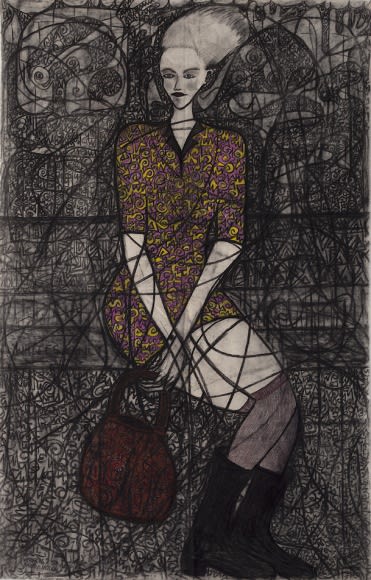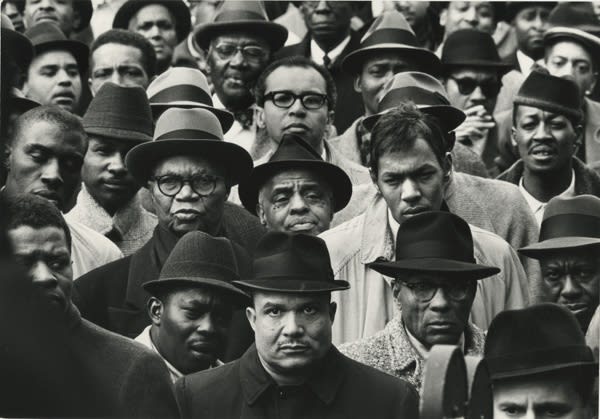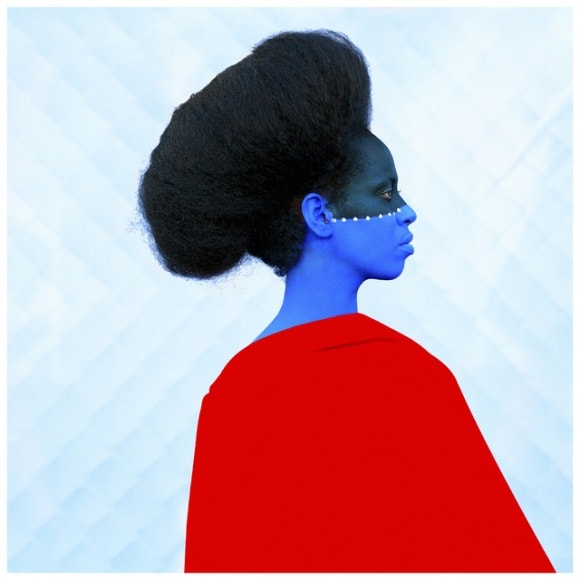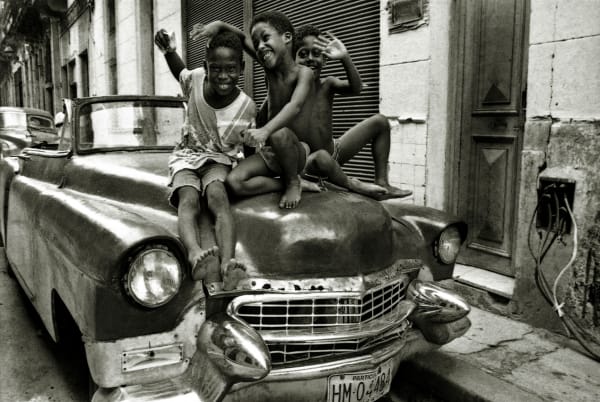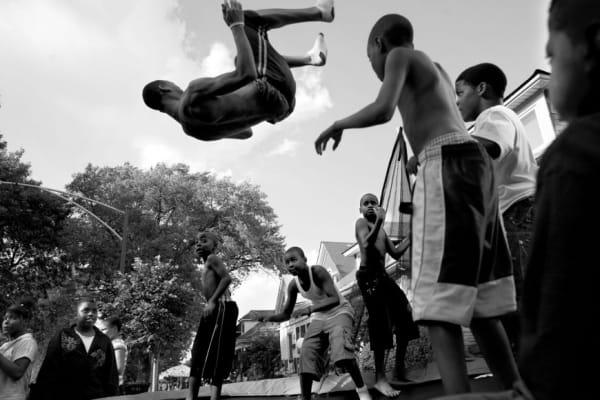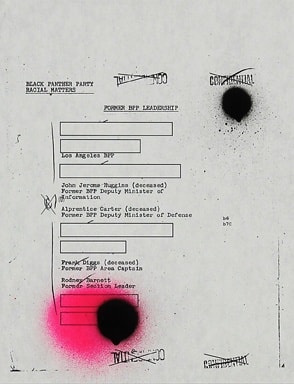Humanity Today: Sadie Barnette Victor Ehikhamenor, Aida Muluneh, Carlos Javier Ortiz, Blessing Ngobeni, Gordon Parks, and Lissette Solórzano
Jenkins Johnson Gallery, San Francisco is pleased to announce Humanity Today, a group exhibition on display from February 2 through March 11, 2017. The exhibition highlights current tensions surrounding civil rights around the world that are reminiscent of past conditions such as Anti-Apartheid, the U.S. Civil Rights movement and the U.S.’s isolation of Cuba. The exhibition presents a perspective on these pivotal periods in history, featuring works by Sadie Barnette Victor Ehikhamenor, Aida Muluneh, Carlos Javier Ortiz, Blessing Ngobeni, Gordon Parks, and Lissette Solórzano. The artists of Humanity Today focus on moving towards equality for all.
On August 23, 1963, the March on Washington for Jobs and Freedom convened on the National Mall, the largest unified action for human and economic rights that had ever taken place in the United States. On the centennial of the Emancipation Proclamation, the Reverend Martin Luther King, Jr. delivered his historic "I Have a Dream" speech, enjoining the nation to put an end to discrimination and intolerance. Gordon Parks (b. Fort Scott, KS, 1912-2006) captured the historic event for LIFE magazine, as seen in the photograph Untitled, Washington, D.C., 1963. Today, millions of people are assembling again at the National Mall in Washington D.C., fighting to secure the same rights won all those years ago; American citizens engaging in the conversation of how Civil Rights can not only be upheld, but pushed further towards a more equal and just society. The faces present in Parks’ Black Muslim Rally, Harlem, New York (1963), are still present today in the streets, in the spirit of the protests blazing trails toward the same vision. Parks’ empathy and charisma, captured in his photography, bridges the chasm of time, echoing contemporary needs for righteous political action.
Jenkins Johnson Gallery, San Francisco is pleased to announce Humanity Today, a group exhibition on display from February 2 through March 11, 2017. The exhibition highlights current tensions surrounding civil rights around the world that are reminiscent of past conditions such as Anti-Apartheid, the U.S. Civil Rights movement and the U.S.’s isolation of Cuba. The exhibition presents a perspective on these pivotal periods in history, featuring works by Sadie Barnette, Victor Ehikhamenor, Aida Muluneh, Carlos Javier Ortiz, Blessing Ngobeni, Gordon Parks, and Lissette Solórzano. The artists of Humanity Today focus on moving towards equality for all.
On August 23, 1963, the March on Washington for Jobs and Freedom convened on the National Mall, the largest unified action for human and economic rights that had ever taken place in the United States. On the centennial of the Emancipation Proclamation, the Reverend Martin Luther King, Jr. delivered his historic "I Have a Dream" speech, enjoining the nation to put an end to discrimination and intolerance. Gordon Parks (b. Fort Scott, KS, 1912-2006) captured the historic event for LIFE magazine, as seen in the photograph Untitled, Washington, D.C., 1963. Today, millions of people are assembling again at the National Mall in Washington D.C., fighting to secure the same rights won all those years ago; American citizens engaging in the conversation of how Civil Rights can not only be upheld, but pushed further towards a more equal and just society. The faces present in Parks’ Black Muslim Rally, Harlem, New York (1963), are still present today in the streets, in the spirit of the protests blazing trails toward the same vision. Parks’ empathy and charisma, captured in his photography, bridges the chasm of time, echoing contemporary needs for righteous political action.
Parks was born into poverty and segregation in Fort Scott, Kansas in 1912; in 1941, Parks joined the Farm Security Administration, succeeding Dorothea Lange, eventually freelancing for Vogue. In 1948, Parks became the first African American to work as a staff photographer for Life magazine, where he was on staff for over twenty years. He was the first African American to direct a major motion picture, pioneering the Blaxploitation genre with his film Shaft. He wrote numerous memoirs, novels and poetry and received countless awards, including the National Medal of Arts. Parks’ photographs are in many public collections, including: The Museum of Modern Art, NY; The Metropolitan Museum of Art, NY; The Whitney Museum of American Art, NY, The Art Institute of Chicago; The J. Paul Getty Museum, CA; National Gallery of Art, Washington, D.C.; Museum of Fine Arts Boston; Library of Congress, Washington, DC; and The Studio Museum in Harlem, NY.
In the same spirit of political consciousness, Carlos Javier Ortiz (b. Puerto Rico, 1977) is a visual artist who creates photography, film and text focusing on urban life, gun violence, race, poverty and marginalized communities. Ortiz’s works featured in Humanity Today, from his series We All We Got, depict the grim realities of the toll that gun violence takes on black communities, particularly on the lives of children. According to The Chicago Tribune, 16 people in Chicago under the age of 17 have been shot, with one death, in 2017. While Ortiz’s photographs serve as an important documentary artifact towards social progress, they also exhibit compassion and an optimism for the future.
Ortiz received a Guggenheim Fellowship for film in 2016. His work has been exhibited nationally and internationally in a variety of venues, including: the Schomburg Center for Research in Black Culture; the Worcester Art Museum, Massachusetts; the International Museum of Photography and Film, Rochester, NY; the Museum of Contemporary Photography, Chicago; the Detroit Institute of Arts; and the Library of Congress. His photos were used to illustrate Ta-Nehisi Coates’ “The Case for Reparations” (2014) article, which was the best selling issue in the history of the Atlantic Magazine. His photos have also been published in The New Yorker and Mother Jones, among many others.
Fueled by the social injustices of post-Apartheid society, Blessing Ngobeni (b. 1985, Tzaneen, South Africa) responds to the failures of the South African government to deliver on its promises of a more equal society after the fall of Apartheid. Poverty continues to dominate the economic landscape and is even on the rise, with the number of people living on less than one US dollar per day more than doubling from 1994 to 2006. Ngobeni communicates these horrors through large-scale, mixed media paintings that serve as a scathing condemnation of the country’s political and social elite. Incorporating a range of found materials from newspaper clippings to magazine cut-outs, Ngobeni’s paintings present a lexicon of symbols to communicate nightmarish visions of a world in turmoil. Borrowing from the language of Surrealism, the anarchy of Dada and the figurative violence of Neo-Expressionism, Ngobeni’s paintings are characterized by obsessive mark making and littered with overt political references.
Sadie Barnette (b. 1984, Oakland, CA) draws on a 500-page FBI surveillance file on her father, a founding member of the Compton chapter of The Black Panther Party, to create work that addresses the endeavors of the Black Panthers to secure the rights of black people everywhere, bringing the viewer to participate in an intergenerational discussion about how to successfully adapt the tactics and successes of the Black Panthers to our contemporary society.
Barnette has a BFA from California Institute of the Arts and an MFA from University of San Diego. Her works are in the collections of the Perez Art Museum Miami and The Studio Museum in Harlem. She was a 2016 Hermitage Artist in Residence, 2015 Artist in Residence at the Studio Museum in Harlem, and a Vermont Studio Center Resident. Her work has been shown internationally, including exhibitions at The Studio Museum in Harlem, the Santa Monica Museum of Art, and The Studio Museum in Harlem. She also had a solo exhibition at Jenkins Johnson Gallery in San Francisco in 2016. Her work has been reviewed in The New York Times, Los Angeles Times, Artforum, and published in various catalogues at the Studio Museum in Harlem.
Influenced by traditional African motifs and religious cosmology, Victor Ehikhamenor (b. 1974, Nigeria), creates images to signify an enchanted world inspired by everyday life, both urban and rural, folktales and stories, histories real and imagined. Drawing from his experiences in Johannesburg, South Africa, Ehikhamenor examines the relationship between black and white South Africans, addressing racial divides not allayed by the end of Apartheid as in Waiting For A History Lesson in A Public Park (2016), which shows a bench still labeled “whites only.” Humanity Today marks Ehikhamenor’s debut at Jenkins Johnson Gallery.
In 2016, Ehikhamenor was featured in the Dak’art Biennale, Senegal, and at Nirox Foundation Nature Park in Johannesburg, South Africa. Ehikhamenor participated in the 56th Venice Biennale in 2015 as well as the Biennale Jogja XIII in Indonesia. He has had international solo exhibitions at institutions including: the Centre for Contemporary Art in Lagos, Nigeria; the Gallery of African Art in London, UK; the Grenada Embassy in Washington, DC, and others. He has received many accolades including the 2016 Nirox Foundation Residency, Johannesburg, South Africa; the 2016 Greatmore Residency, Cape Town, South Africa; the 2015 Casa Zia Lina, Elba, Italy; and the 2014 Norman Mailer Fellowship for Writing.
Aida Muluneh (b.1974, Ethiopia) creates vibrant photographs that express what it is to be an African woman, to encapsulate gender and identity, and to situate it within the colonial experience. The World is 9 series focuses on body painting, inspired by traditional body art from across Africa, expressing the history and future of Ethiopia, the power struggle for the women who live there, and personal references regarding life and love.
Muluneh uses art to promote cultural development through her organization DESTA (Developing and Educating Society Through Art), and she is the founder of the Addis Foto Fest, the first international photography festival in Ethiopia. Her work is in the permanent collection of the Smithsonian’s National Museum of African Art. Muluneh received the 2007 European Union Prize in the Rencontres Africaines de la Photographie, in Bamako, Mali and was the 2010 winner of the CRAF International Award of Photography in Spilimbergo, Italy. She is currently documenting the Ethiopian drought as a photojournalist for the Washington Post. Aida Muluneh participated in the 2016 Dakar Biennale.
Created during and after Cuba’s “Special Period,” occurring after the fall of the Soviet Union in 1992, and the withdrawal of Soviet backing, the photographs of Lisette Solórzano (b. 1969, Havana) take a direct look at Cuba’s many generations, betraying a sense of hardship, while also revealing the energy and beauty of the island and its people. Solórzano focuses her camera in on everyday life, operating so often in the space between the said and unsaid while relating her work back to the sea. There is beauty and there is pain in these new works. Solórzano has a talent for creating a depth of range that keeps the viewer interested in visiting and revisiting her work.
Solorzano has shown widely throughout South and Central America, as well as the United States. Her work has been featured in Europe as well, and she regularly participates in the Havana Biennial. She has won numerous awards and accolades, including a 2002 UNEAC price during the Bienal of Photograph. Solorzano’s work is in public collections throughout Cuba, the United States, and Italy.
-

Victor Ehikhamenor
Waiting For A History Lesson In A Public Park, 2016
charcoal and oil pastel on canvas
72 x 47 inches
-

Gordon Parks
Black Muslim Rally, Harlem, New York, 1963
gelatin silver print
11 x 14 inches
-

Blessing Ngobeni
Make Us Great Again, 2016
mixed media on canvas
64 5/8 x 126 inches
-

Lalla Essaydi
Les Femmes du Maroc #26B, 2006
chromogenic print mounted to aluminum with UV protective laminate
60 x 48 inches
edition of 10
-

Aida Muluneh
Strength in Honor, 2016
photograph printed on sunset hot press rag 310 GSM
31 1/2 x 31 1/2 inches
-

Lisette Solórzano
Niños jugando sobre carro americano, 1998
baryta archival fine art print
16 x 20 inches
-

Carlos Javier Ortiz
Kids Jump, Auburn Gresham, Chicago (From We All We Got), 2010
archival pigment print on Hahnemuhle Photo Silk Baryta
20 x 26 inches
edition of 7
-

Sadie Barnette
Untitled (FBI, Former Leadership), 2016
aerosol paint on laser print
30 x 22 inches


